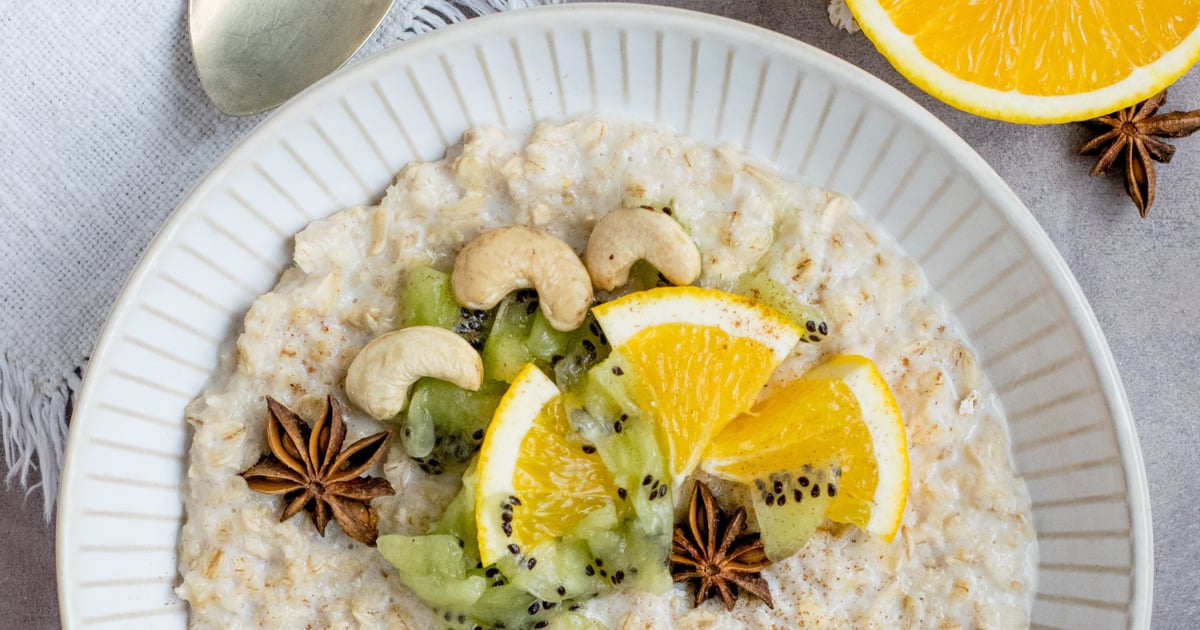Thomson points out that there are a variety of types of oatmeal, each with its own qualities, including texture, flavor, and cooking time. “It’s important to choose the right type of oatmeal for your cooking, baking, or personal needs,” she notes.
What’s more, not all oatmeal offers the same health benefits. The processing and texture of each type of oatmeal will make a difference in how quickly you digest it, how much it will cause your blood sugar to fluctuate, and how soon after eating you’ll be hungry, notes Tanya Mezher, RD, CDN, and lead functional practitioner at Malla, a functional medicine company.
Here are the various types of oatmeal and their nutrition facts, according to Mezher. Just note that they may vary slightly depending on exactly which product you buy.
Steel-Cut Oats (aka Irish Oatmeal or Groats)
“These are the whole oat groats (common name for the grain kernel) cut into coarse pieces by a sharp metal blade,” Mezher explains. “Groats are typically more ‘al dente’ in texture when cooked than the following types, having a chewier texture and nutty flavor.”
Steel-cut oats are also minimally processed, so they are the highest in fiber content, take the longest to cook, and have the most health benefits.
Nutrition facts for steel-cut oats (1/4 cup dry): 150 calories, 5 g protein, 27 g carbohydrates, 4 g fiber, 2.5 g fat, 0 g sugar.
Scottish Oatmeal
The name comes from the way these oats were traditionally processed by the Scots: by stone-grinding them instead of using a steel blade, Mezher notes. “This results in broken bits of various sizes, creating a creamier porridge-like texture when cooked,” she notes.
Nutrition facts for steel-cut oats (1/4 cup dry): 150 calories, 5 g protein, 27 g carbohydrates, 5 g fiber, 2.5 g fat, 0 g sugar
Rolled Oats or Old-Fashioned Oats
“Also known as old-fashioned oats, rolled oats are made by steaming and flattening whole oat groats into flakes,” Mezher says. “This process stabilizes the oats so they stay fresher longer. They cook faster than steel-cut oats due to the greater surface area and have a softer, creamier texture when cooked.”
Nutrition facts for rolled oats (1/4 cup dry): 150 calories, 5 g protein, 27 g carbohydrates, 4 g fiber, 2.5 g fat, 1 g sugar
Quick or Instant Oats
If you ate oatmeal as a kid and it came in packets, this is probably the type of oatmeal you ate. “Quick oats are similar to rolled oats, but they’re rolled into thinner flakes and processed to cook more quickly,” Mezher explains. “These are the most processed type of oatmeal. They cook the fastest and have the softest, creamiest texture. Keep in mind, some brands and types of instant oats (namely, those that are flavored) will come with extra added sugar and have different nutrition facts than plain quick oats.
Nutrition facts for quick oats (1/4 cup dry): 150 calories, 5 g protein, 27 g carbohydrates, 3 g fiber, 3 g fat, 1 g sugar.
